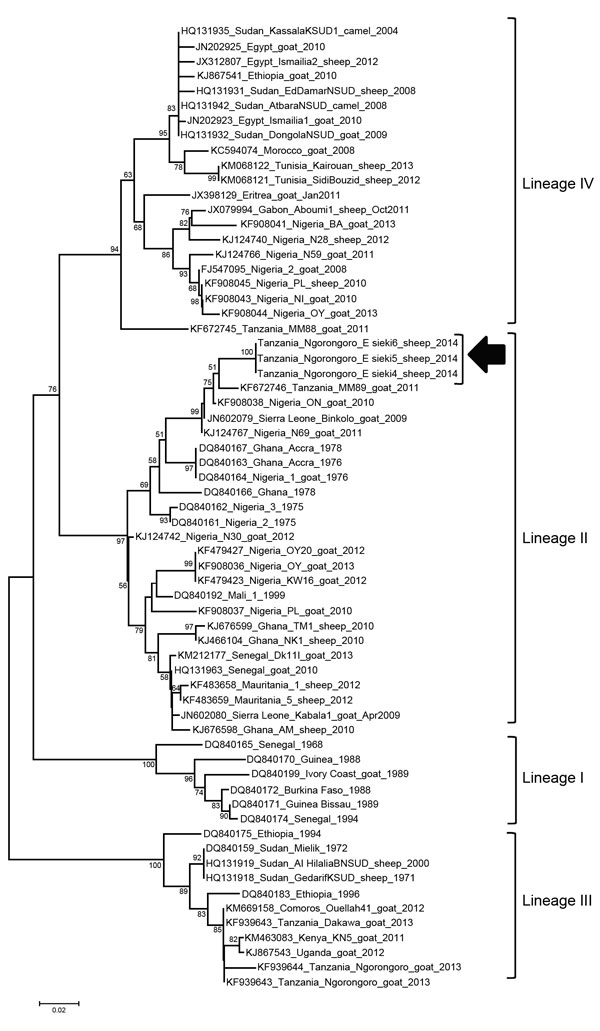Volume 21, Number 12—December 2015
Dispatch
Spillover of Peste des Petits Ruminants Virus from Domestic to Wild Ruminants in the Serengeti Ecosystem, Tanzania
Figure 2

Figure 2. Neighbor-joining tree constructed on the basis of partial N-gene sequences of peste des petits ruminants virus (PPRV), showing relationships among the PPRV isolates from Africa. The Kimura 2-parameter model was used to calculate percentages (indicated by numbers beside branches) of replicate trees in which the associated taxa clustered together in 1,000 bootstrap replicates. Arrow indicates isolates sequenced in this study; sequences have been submitted to GenBank and are awaiting accession numbers. Scale bar indicates nucleotide substitutions per site.
1These authors contributed equally to this article.
Page created: November 18, 2015
Page updated: November 18, 2015
Page reviewed: November 18, 2015
The conclusions, findings, and opinions expressed by authors contributing to this journal do not necessarily reflect the official position of the U.S. Department of Health and Human Services, the Public Health Service, the Centers for Disease Control and Prevention, or the authors' affiliated institutions. Use of trade names is for identification only and does not imply endorsement by any of the groups named above.